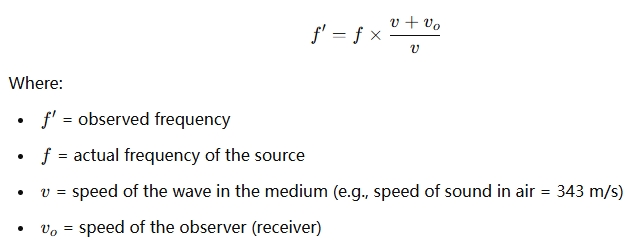Doppler Effect Approaching Receiver Calculator
What is the Doppler Effect Approaching Receiver Calculator?
The Doppler Effect Approaching Receiver Calculator is a tool used to calculate the observed frequency of a wave (such as sound or light) when the receiver (observer) is moving toward the stationary source. Unlike when the source moves, this case involves the receiver moving, which affects how frequently they encounter wave crests.
Why use it?
- To determine how motion affects perceived frequency when the observer moves toward the source.
- Important in radar technology, astronomy, medical imaging, and vehicle speed detection.
- Used in Doppler shift analysis to measure the velocity of moving objects.
How does it work?
The calculator is based on the Doppler Effect formula for an approaching receiver:

Since the receiver is moving toward the source, the numerator increases, causing an increase in the perceived frequency (higher pitch or blue shift in light).
When is it used?
- When a person runs toward a sound source (e.g., a speaker) and notices a pitch increase.
- In Doppler radar, when tracking an approaching object.
- In astronomy, when detecting objects moving toward Earth (blueshift in light).
- In ultrasound imaging, to measure blood flow toward the sensor.